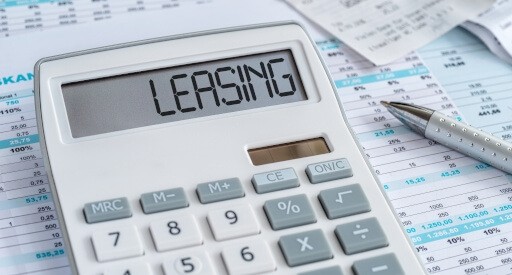
Routine rental inspections are important for effectively monitoring and managing your property. However, there comes a point where regular rental inspections can become a bit too regular.
As a landlord, it's important to understand the guidelines and limitations on how often you can inspect your rental property. Though it’s important to keep tabs on your investment, you also want to make sure you respect your tenant’s boundaries and legal rights. So, that poses the question: how often can a landlord inspect a rental property?
In this article, we’ll discuss all things landlord inspections, from how often you should conduct them to knowing what to look for during your rental walk-through. Below is an overview of what we’re going to cover:
- Why do landlords need to perform inspections?
- How often should a rental property be inspected?
- What is included in a rental inspection checklist for landlords?
- What are best inspection practices for landlords?
Why Do Landlords Need to Perform Inspections?
Routinely performing rental property inspections is crucial for your bottom line. By paying regular visits to your property, you can catch minor issues before they escalate into more urgent matters resulting in expensive repairs or, even worse, legal consequences.
Before you skip out on your next rental inspection, consider how it could affect the following aspects of your rental business:
Preventative maintenance
It’s your job to stay on top of property maintenance. This means catching issues early on before they negatively impact your property’s value and livability. Regular rental inspections allow for this proactive maintenance approach, as they’re used to monitor a property’s condition and identify any arising maintenance needs.
As you follow your walk-through inspection checklist, consider conducting the following preventative maintenance tasks:
- Check your gutters
- Monitor your dryer
- Service the septic system
- Conduct HVAC checkups
- Inspect and clean the chimney and fireplace
Lease compliance
A rental inspection will give you peace of mind if you’re concerned that your tenants are violating their lease. Regular inspections allow you to check in with your tenants and ensure that they’re abiding by their lease agreement. For example, if you have a strict no-pet-policy, you can look out for evidence of animals during your inspection. If you find any, you can address the issue directly with your tenant and take appropriate action.
Tenant satisfaction
Rental inspections give you the chance to show face with your renters. This not only shows how much you care for your property, but also your interest in satisfying your occupants. Paying regular visits also allows you to build a stronger relationship with your tenants, establishing deeper levels of trust and comfort between both parties. By doing this, you’ll likely see improved tenant retention, and, consequently, reduced vacancy rates.
If your rental property is occupied, it’s important to perform routine inspections to make sure your tenant is taking good care of the property, as well as ensuring the property is habitable for them. If your rental property is vacant, you should still perform routine inspections to ensure your property is in good condition, especially before a new tenant moves in. Known as a move-in/move-out inspection, these types of inspections occur when you’re in between tenants. Move-in/move-out inspections ensure that the previous tenant has left the premises in good condition and alert you of any damage or issues that require repair before your next tenant moves in.
How Often Can Landlords Inspect a Rental Property?
The permissible timing and frequency of rental inspections varies from state to state. However, the general rule of thumb is to inspect your property twice a year: once during the move-in process and once during the move-out process. Landlords visit during these times to monitor their property’s condition pre- and post-lease, taking note of differences that could affect the security deposit.
If your local mandates allow, it’s also a good idea to inspect your property at least once between the start and end of a lease. That way, if an issue arises, like a maintenance repair or lease violation, you can address it promptly before it gets out of hand. However, it’s important to give proper notice before dropping in mid-lease. While it could vary based on your state laws, the standard apartment inspection notice is at least 24 hours beforehand. If you enter prematurely or unannounced, you risk violating your tenant’s privacy and right to quiet enjoyment.
What warrants multiple mid-lease inspections?
Your state laws will determine what is considered an excessive number of rental inspections per lease period. Ultimately, every state will prioritize a tenant’s privacy and right to quiet enjoyment, meaning their ability to live at a property without disturbance. If your frequent visits violate these rights by legal standards, you could face tenant complaints, fines, or even legal action.
Are more frequent inspections legal if landlords suspect lease violations?
If you suspect that your tenant is violating their lease, it makes sense to conduct an inspection. However, you must first ensure that you’re not approaching an excessive number of visits. If you’ve already conducted several inspections, you’ll need a valid reason for another visit. Lease violations that could warrant an inspection include:
- Having pets in a no pets property or without paying the necessary fees
- Having long-term guests in the rental that aren’t on the lease
- Excessively damaging the property past normal wear and tear
- Engaging in illegal activities on the property
- Refusing to grant access for maintenance or repair needs
Although a surprise visit may be the best way to catch a tenant violating their lease, it’s illegal to show up unannounced. You must always give your tenant proper notice before entering the property. In some states, you may be required to give a written notice, so make sure to see what is expected of you before you inspect an occupied rental.
Can a tenant refuse a landlord inspection?
A tenant can refuse a landlord inspection if it is not within the guidelines of their lease agreement or state laws. As we mentioned earlier, tenants have legal rights to privacy and quiet enjoyment. If an inspection violates these rights, meaning it’s unannounced or deemed excessive, your tenant has the right to refuse entry. However, if the tenant refuses to cooperate with a scheduled and compliant inspection, you may have grounds for further action as it could be considered a lease violation.
What to Include in Your Rental Inspection Checklist
Rental inspections are only worthwhile if they’re done correctly. So, it’s important to come to your inspection prepared, whether it be a during move-in, move-out, or mid-lease. The best way to do this is to create a walk-through inspection checklist, which will help you get the most out of a rental inspection by outlining what to look for.
A rental inspection checklist will include an itemized list of every home item or appliance, leaving room for you to report on the condition of each item upon move-in and move-out. During your walk-through, you can make specific notes about each item, flagging any needed repairs or damages such as:
- Evidence of pest infestation
- Dull or damaged flooring
- Holes in doors or walls
- Broken windows
- Lack of lawn upkeep
- Issues with toilets, sinks, or the water line
- Malfunctioning appliances
- Exterior condition (e.g. the roof, gutters, foundation, etc.)
- Signs of mold or mildew in damp areas
- Smoke or carbon monoxide detectors needing replacement batteries
- HVAC system inefficiencies
- Electrical issues such as exposed wiring or faulty outlets
Thoroughly inspecting each of the abovementioned items will help you maintain your property’s condition, improve tenant safety, and ensure landlord compliance. Additionally, you should also keep track of your property’s annual, bi-annual, and quarterly maintenance needs. These could involve tasks like changing your HVAC filters or cleaning your gutters. Staying on top of these tasks will help you prevent any costly repairs that could hurt your rental business.
Before you begin inspecting, download this PDF for a thorough rental inspection checklist template.
Best Practices for Rental Inspections
Now that you understand why rental inspections are important and what an inspection entails, there are a few things to keep in mind before performing one. Adhering to these best practices will help you perform effective inspections, maintain your property’s condition, and build a positive, lasting relationship with your tenants.
Include an inspection clause in the lease
Before your tenants move in, make sure they understand that inspections are part of the landlord-tenant process. The best way to do this is by including an inspection clause within the lease agreement, which should outline when and how inspections will take place.
When you create a lease with Apartments.com, you can easily incorporate this clause to make your renter aware of inspection expectations and guidelines. Our fully customizable lease agreements are tailored to specific states and are legally binding, ensuring compliance with local laws and ordinances, no matter where your property is located. Once your lease is finalized, tenants can conveniently sign it online.
Here’s a sample clause for reference:
Landlord’s Access for Inspection and Emergency:
The Landlord or their agents may enter the Premises in the event of an emergency, to perform repairs or improvements, or to show the Premises to prospective buyers or renters. Additionally, the Landlord may conduct an annual inspection to assess safety and maintenance issues. Except in emergencies, tenant abandonment, court orders, or situations where it is impractical, the Landlord will provide the Tenant with twenty-four (24) hours' notice prior to entry.
Maintain your professionalism
It’s important to maintain your professionalism when conducting rental inspections. In addition to giving prior notice, you should also provide your tenant with other relevant details like the date and time of your visit and specific areas you want to assess. Make sure to arrive on time with all necessary tools or materials needed for the inspection. Throughout your visit, engage with tenants politely and be open to any questions or concerns they may have. Remember, a professional and respectful demeanor not only makes the inspection go smoother but also builds trust and rapport with your renters.
Consider a drive-by inspection
If you don’t need to conduct a full-fledged inspection, drive-by inspections are a great alternative. This type of inspection involves visually assessing your property’s exterior without entering the premises or disturbing tenants. This is a great option if you’re only interested in checking exterior maintenance needs, such as lawn care or outdoor damage. Drive-by inspections can be conducted more frequently than interior inspections, as they’re less intrusive of a tenant’s privacy. However, if you do choose this route, make sure to still get your tenant’s approval to respect their privacy and maintain compliance.
Manage Your Property with Apartments.com
As a landlord, rental inspections are an essential part of the job. While they can sometimes feel like a chore, thorough inspections play a vital role in preserving your property and safeguarding your investment.
With the array of Rental Tools available on Apartments.com, you can stay organized, track maintenance requests, and foster a positive relationship with your tenants. Whether you're new to rental inspections or have done many before, our resources are designed to help simplify the process. Join us today to take charge of your rental property and excel in conducting inspections.
This article was originally published on December 30, 2020, by Megan Bullock.











